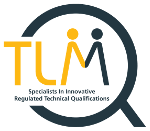Risk Contingency Plan
Return to Index
TLM Contingency Plan for Assessments and Centre Closures
Risk Register and Contingency
The over-arching goal is to provide external quality assurance for qualifications at low cost, reducing administrative overhead for assessors and maximising rewards for learners. The following risks have been identified, prioritised, and contingency measures outlined:
Awarding Risks
1. Certification Fraud
- Risk: Unauthorised use or forgery of certificates.
- Contingency: Implement online authentication to prevent fraud. Forgeries will trigger an investigation, legal action where necessary, and reporting to regulators. Suspected identity theft will result in certificate authentication being blocked until verified ownership is re-established.
2. Assessor Malpractice
- Risk: Assessors failing to meet professional standards.
- Contingency: All centres undergo risk assessment, and assessors are vetted, trained, and monitored. TLM provides various documents and videos to mitigate malpractice and maladministration. Actions taken in line with TLM’s Sanctions Policy, and third parties involved as required. All actions are proportionate and reviewed on an individual basis to make sure they are fair and proportionate. Depending upon the gravity of the incident will result in account suspension, mandatory retraining, or legal action. Where there is cause to believe that an incident may also affect Centres and/or other awarding bodies these will be notified by TLM. TLM will inform the regulators and other relevant bodies where any incidents, or suspected incidents, of malpractice/maladministration are discovered, and where a potential Adverse Effect is identified.
3. Errors in Assessment
- Risk: Misjudgement or inaccuracies in marking.
- Contingency: A robust moderation/marking process minimises errors. New markers will have to demonstrate that they can mark each version of the assessment accurately before being asked to do live marking. The Standardisation exercise before live marking will be for carried out for each version. If a marker is seen to consistently exceed these tolerances then they will be withdrawn and receive training and additional standardisation support before being allowed to mark again. Where a potential Adverse Effect is identified TLM will inform the regulators.
4. Risk of Compromising Data Systems
- Risk: Breach of sensitive data systems.
- Contingency: Use encrypted passwords, HTTPS protocols, and regular backups. User-specific accounts ensure accountability, with administrator-level permissions restricted to experienced personnel. Any breach will be contained, and compromised data will be restored.
Business Risks
5. Political Change
- Risk: Policy changes affecting funding or market viability.
- Contingency: Diversify into international markets and alternative sectors to reduce dependence on public sector funding.
6. Bureaucratic Risks
- Risk: High administrative costs.
- Contingency: Leverage open-source and cloud-based technologies to streamline operations. Participate in EU and international projects to spread costs.
7. Loss of Revenue
- Risk: Revenue drop jeopardising operations.
- Contingency: Suspend development work and notify regulators. Ensure learners and centres receive certification and support through alternative arrangements or partnerships.
8. Loss of Key Personnel
- Risk: Impact of losing critical staff.
- Contingency: Cross-training ensures deputies are prepared to maintain essential functions. Recruitment of replacements and temporary operational adjustments minimise disruption.
Regulatory Risks
9. Compliance Costs
- Risk: Financial and operational burden of meeting regulatory standards.
- Contingency: Prioritise resources towards compliance and invest in efficient systems to handle requirements cost-effectively.
10. Governance
- Risk: Non-compliance with governance standards.
- Contingency: Maintain transparent and accountable governance practices. Regular audits ensure adherence to conditions of recognition.
Disruption of Assessments
Risk: Exams or assessments may be disrupted by unforeseen events.
Contingency:
- Alternative Venues: Identify backup venues in advance and ensure secure transport of materials.
- Special Considerations: Apply for adjustments for impacted students.
- Stakeholder Communication: Inform learners, parents, and staff of changes promptly.
- Remote Delivery Capability: Most of TLM’s exams are delivered electronically via browser-based software, allowing for a swift transition to a fully remote examination system. This ensures continuity with minimal disruption to learners.
- Post-Event Actions: Evaluate impact on student performance and facilitate rescheduling if needed.Where a potential Adverse Effect is identified TLM will inform the regulators.
Centre Closure
Risk: Centre closure due to financial or operational issues.
Contingency:
- Notification: Centres must inform TLM immediately of impending closure.
- Learner Safeguarding: Ensure all learner records and pending certifications are updated and securely transferred to TLM.
- Transition Support: TLM will facilitate learner transfers to alternative centres and ensure continuity of qualifications.Where a potential Adverse Effect is identified TLM will inform the regulators.
Understanding Our Role and Safeguards
TLM recognises its critical role in maintaining the integrity of the qualifications process and safeguarding learner outcomes. To this end, we commit to the following safeguards:
1. Proactive Risk Management
- Regularly review and update risk registers to address evolving challenges.
- Conduct internal audits to identify and mitigate risks before they escalate.
2. Stakeholder Engagement
- Maintain clear and open communication with centres, learners, and regulators.
- Provide timely guidance to centres on implementing contingency measures effectively.
3. Robust Systems and Processes
- Use advanced technologies to ensure data security, streamline operations, and maintain transparency.
- Implement continuous training programmes for staff and assessors to uphold professional standards.
4. Learner-Centric Approach
- Prioritise learner interests in all contingency decisions.
- Facilitate seamless transitions during disruptions or centre closures, ensuring minimal impact on learner progress.
Regulatory Compliance and Monitoring
This plan complies with Ofqual General Condition A6 and other regulatory requirements. Regular reviews will ensure the plan remains robust and responsive to emerging risks.

